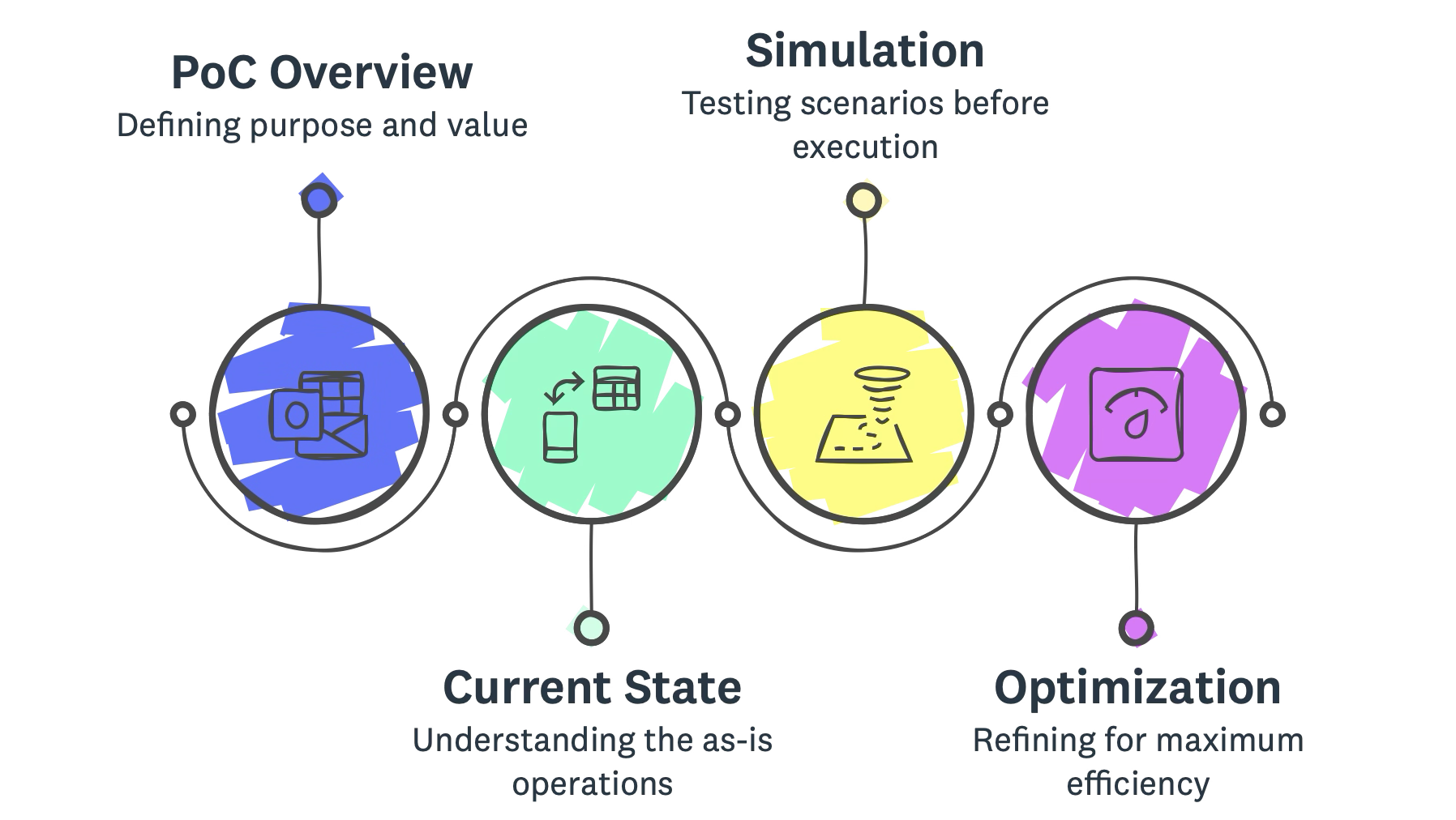Digital Twins: PoCs for Smarter Decisions
As organizations navigate an increasingly complex and data-driven world, Digital Twins have emerged as a critical tool for optimizing decision-making, improving efficiency, and mitigating risk. By creating virtual representations of real-world systems, Digital Twins allow businesses to simulate, analyze, and optimize operations before making real-world changes.
However, before fully committing to a Digital Twin implementation, organizations must first validate its feasibility and impact. This is where a Digital Twin Proof of Concept (PoC) comes into play. A well-structured PoC enables businesses to test, refine, and optimize their approach, ensuring that their investment in Digital Twin technology leads to meaningful business outcomes.
What is a Digital Twin PoC?
A Digital Twin PoC is a structured framework that demonstrates how a digital twin can be applied to real-world challenges within an organization. It helps leaders evaluate how the technology will drive operational improvements, strategic decision-making, and risk mitigation before committing to full-scale implementation.
A successful PoC typically consists of three core modules—Current State, Simulation, and Optimization.
1. PoC Overview: Defining the Purpose and Value
Before diving into technical details, a Digital Twin PoC starts with an overview module that provides:
The purpose of the Digital Twin and how it aligns with business goals.
The challenges it addresses, such as inefficiencies, disruptions, or cost optimization.
A high-level summary of key features, analytical models, and data usage.
This overview acts as a strategic entry point, ensuring that stakeholders—from executives to engineers—understand why the PoC is valuable before moving into the technical details.
2. Current State: Understanding the As-Is Operations
The Current State module provides a real-time snapshot of an organization’s existing operations. This module is essential for identifying inefficiencies, forecasting disruptions, and setting a baseline for improvements.
It includes:
Key Performance Indicators (KPIs): Performance tracking against business objectives.
Graphical Representations: Spatial maps, network graphs, or 3D models for an intuitive understanding of operations.
Forecasted Disruptions: Insights into potential risks, probabilities, and root causes based on historical and live data.
By visualizing the current operational state, businesses can pinpoint areas for improvement, automation, or strategic investment.
3. Simulation: Testing Scenarios Before Execution
Once the current state is mapped, the next step is Simulation—the ability to create and test what-if scenarios. This module helps organizations explore:
How changes in demand, supply, or external factors impact operations.
How different strategies would perform under various conditions.
How predictive analytics can improve decision-making.
Key features of the simulation module include:
Scenario Creation – Users can input different variables and test multiple scenarios.
KPI Projections – Visual comparisons of projected vs. actual performance.
Timeline Playback – A feature that allows users to simulate how operational changes evolve over time.
By testing changes in a virtual environment before implementing them in the real world, organizations can reduce risk, optimize outcomes, and increase efficiency.
4. Optimization: Refining for Maximum Efficiency
The Optimization module takes insights from the Current State and Simulation phases and refines them into actionable strategies. The goal is to determine the best possible solutions for forecasted disruptions or performance improvements.
Key optimization features include:
Scenario Comparisons – Generating multiple optimization scenarios and comparing them to the current state.
Budgeting and Investment Planning – Tools like heatmaps, Gantt charts, and portfolio overviews to optimize resource allocation.
KPI Prioritization & Network Diagrams – Decision-makers can adjust parameters and fine-tune strategies based on key business priorities.
This module ensures that organizations don’t just react to disruptions but proactively optimize their strategies for long-term efficiency and success.
Proof of Concepts
PoCs will become an essential step in digital transformation strategies. With AI-powered simulations, real-time data integrations, and cloud-based interoperability, Digital Twins will continue to enhance operational intelligence and decision-making across industries. A well-executed PoC isn’t just an experiment—it’s the blueprint for smarter, data-driven innovation.
Let’s connect and discuss how PoCs + Design can drive transformation in your industry.
